Archive
Marlborough Fine Art
- Marlborough Fine Art
- Art Gallery
Marlborough Fine Art was founded in 1946 by the Viennese emigrants Harry Fischer and Frank Lloyd in the Mayfair district, focused on Impressionists, Modern and Contemporary Art.
Word Count: 26
17–18 Old Bond Street, Mayfair, London W1 (from early 1960s as Marlborough New London); 39 Old Bond Street, Mayfair, London W1 (from 1960); currently 6 Albemarle Street, Mayfair, London W1.
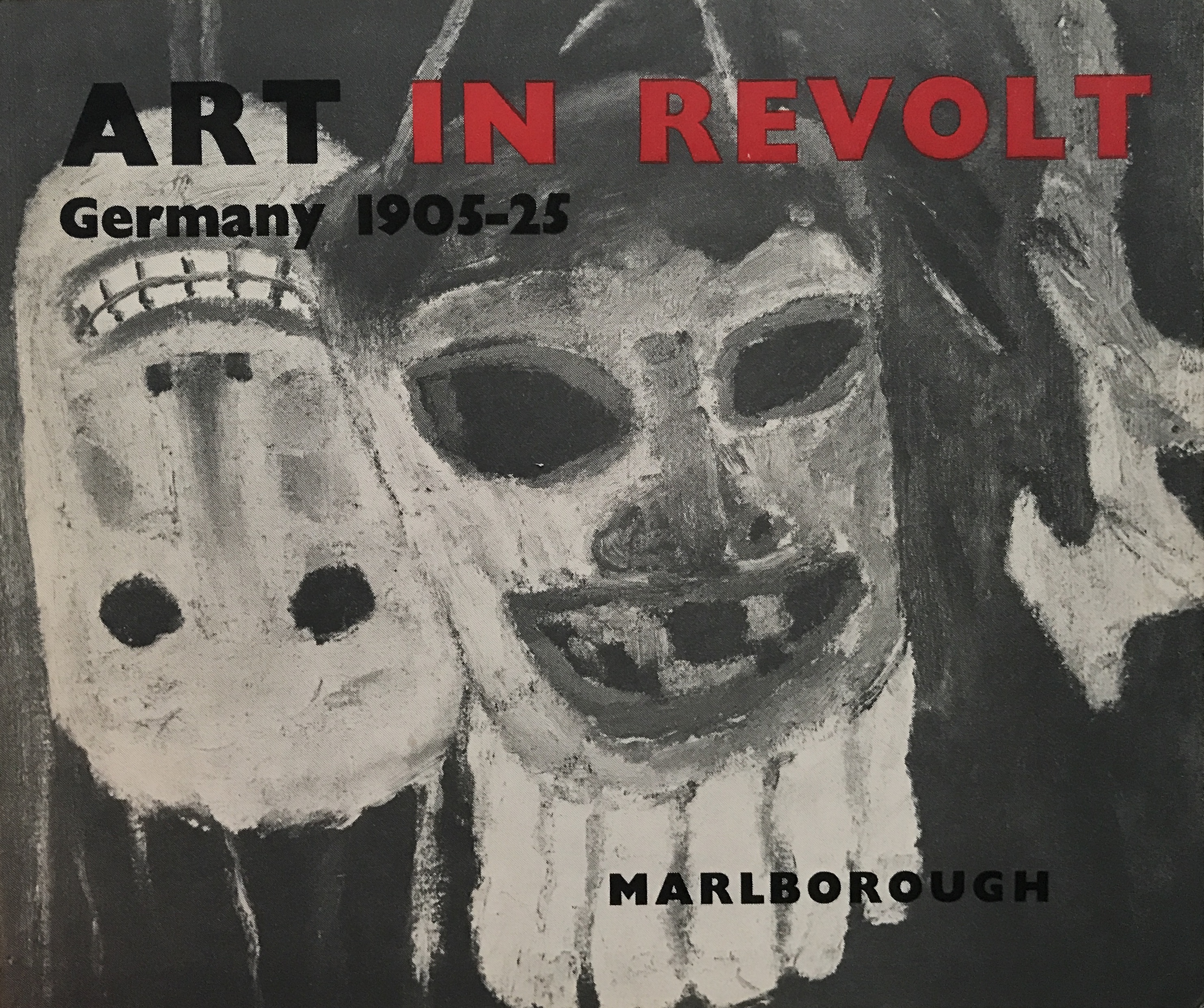
Art in Revolt. Germany 1905–25. Exhibition in Aid of World Refugee Year, exh. cat. Marlborough Fine Art, London, 1959, cover (METROMOD Archive). 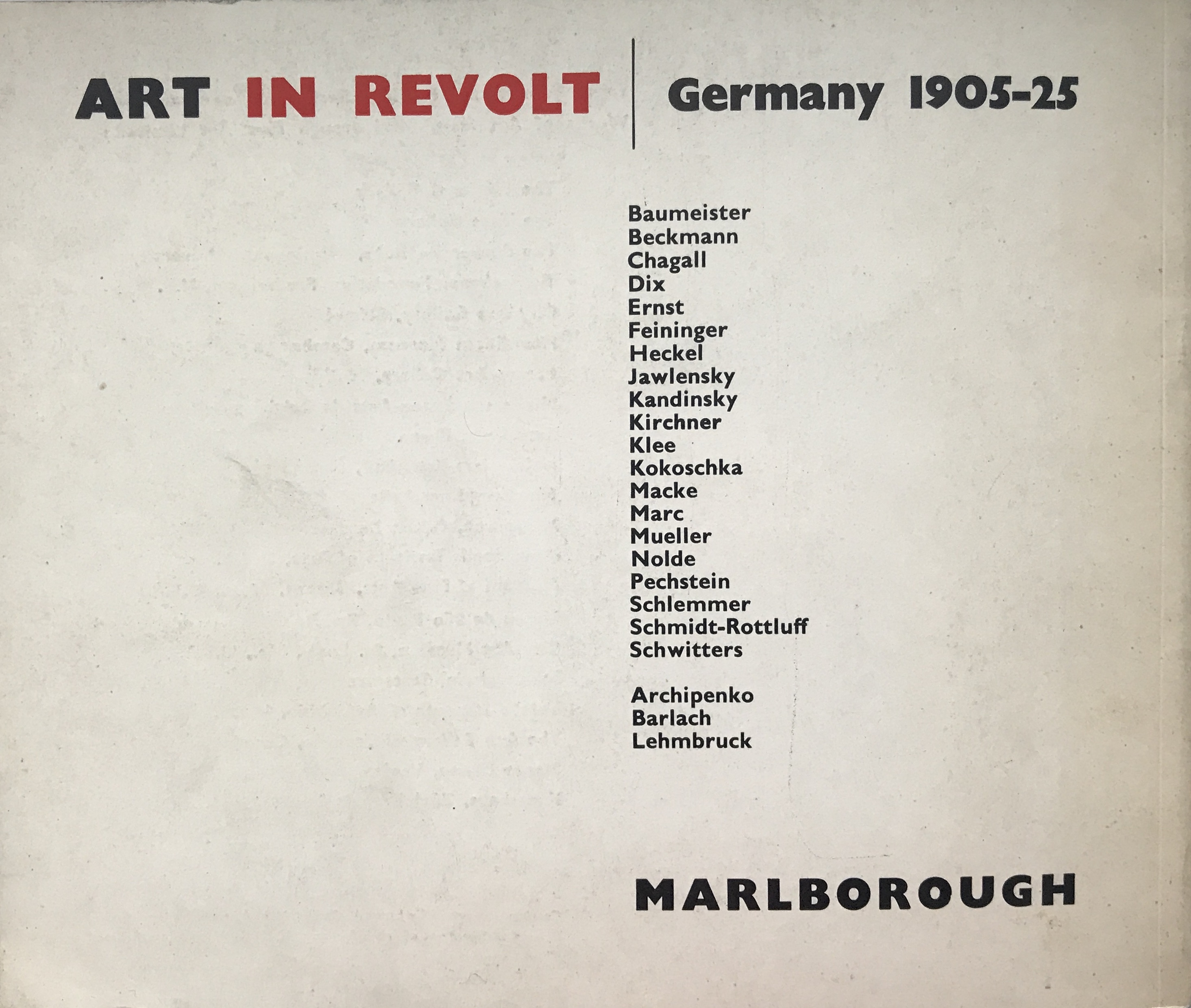
Art in Revolt. Germany 1905–25. Exhibition in Aid of World Refugee Year, exh. cat. Marlborough Fine Art, London, 1959, back cover (METROMOD Archive). 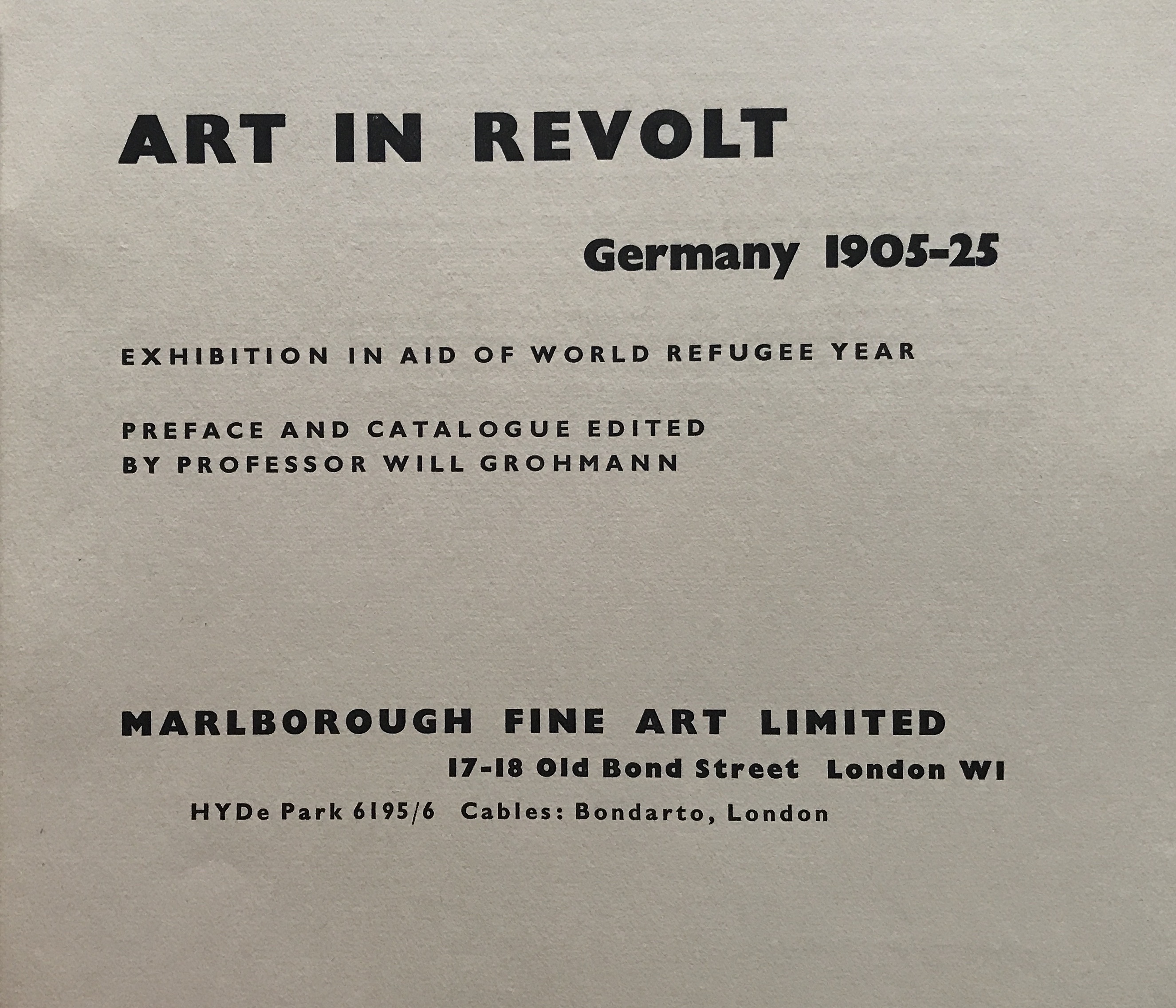
Art in Revolt. Germany 1905–25. Exhibition in Aid of World Refugee Year, exh. cat. Marlborough Fine Art, London, 1959, title page (METROMOD Archive). 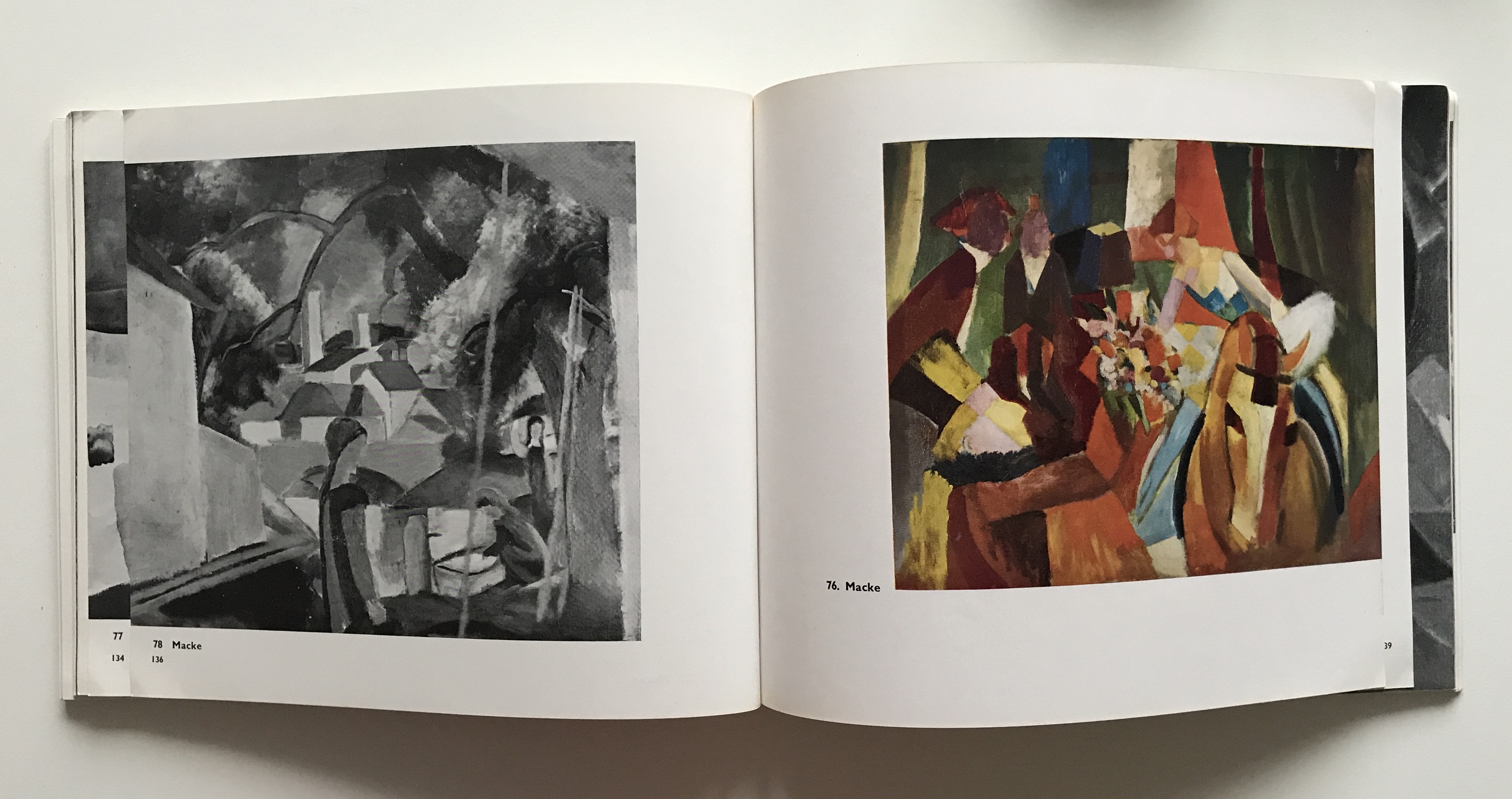
Art in Revolt. Germany 1905–25. Exhibition in Aid of World Refugee Year, exh. cat. Marlborough Fine Art, London, 1959, pp. 136–137 with works by August Macke (METROMOD Archive). 
Art in Revolt. Germany 1905–25. Exhibition in Aid of World Refugee Year, exh. cat. Marlborough Fine Art, London, 1959, pp. 162–163 with works by Kurt Schwitters (METROMOD Archive). 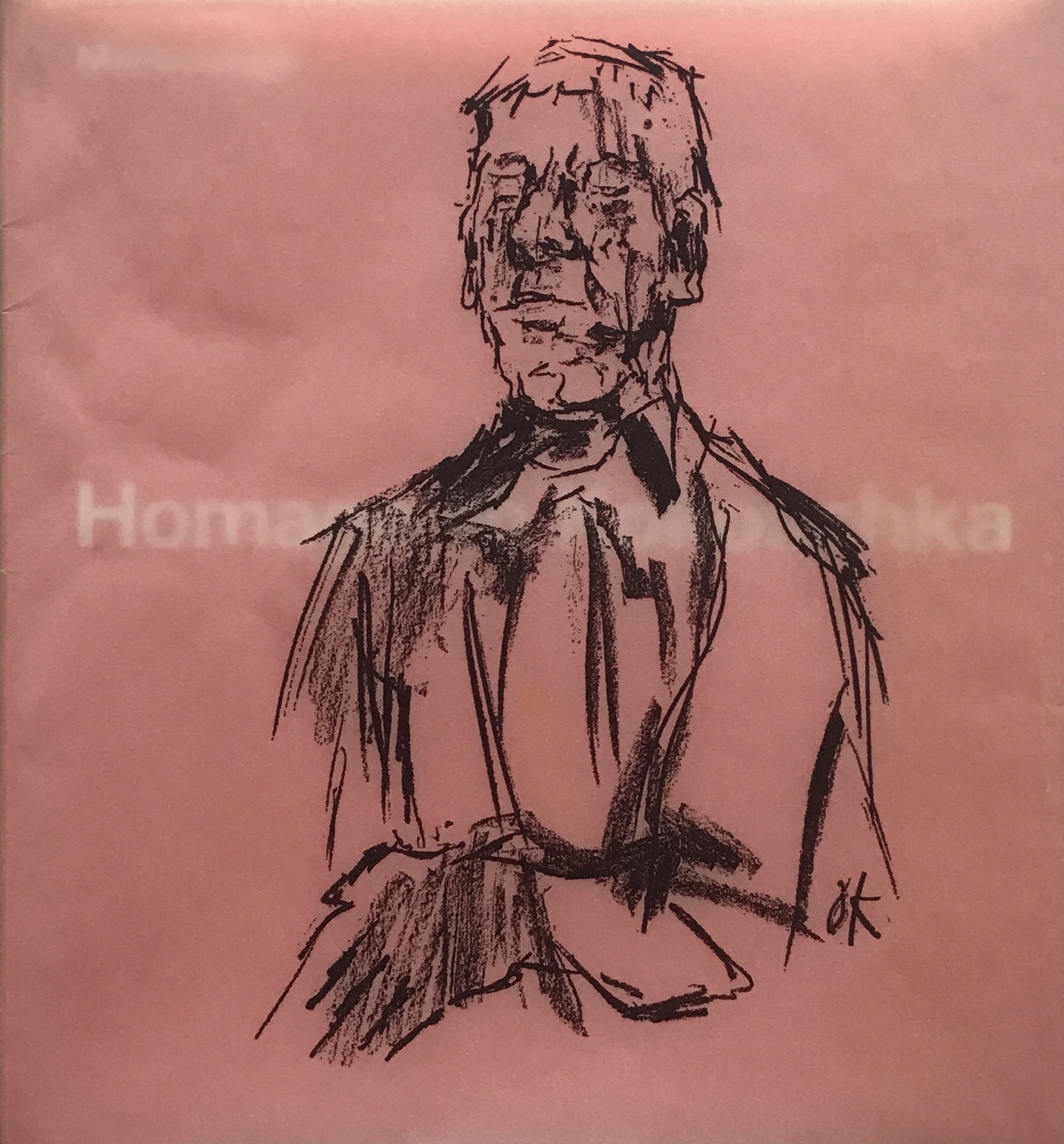
Homage to Kokoschka, exhibition catalogue, Marlborough Fine Art, 39 Old Bond Street, London, March-April 1966, cover (METROMOD Archive). Sales exhibition to mark the artist’s 80th birthday. 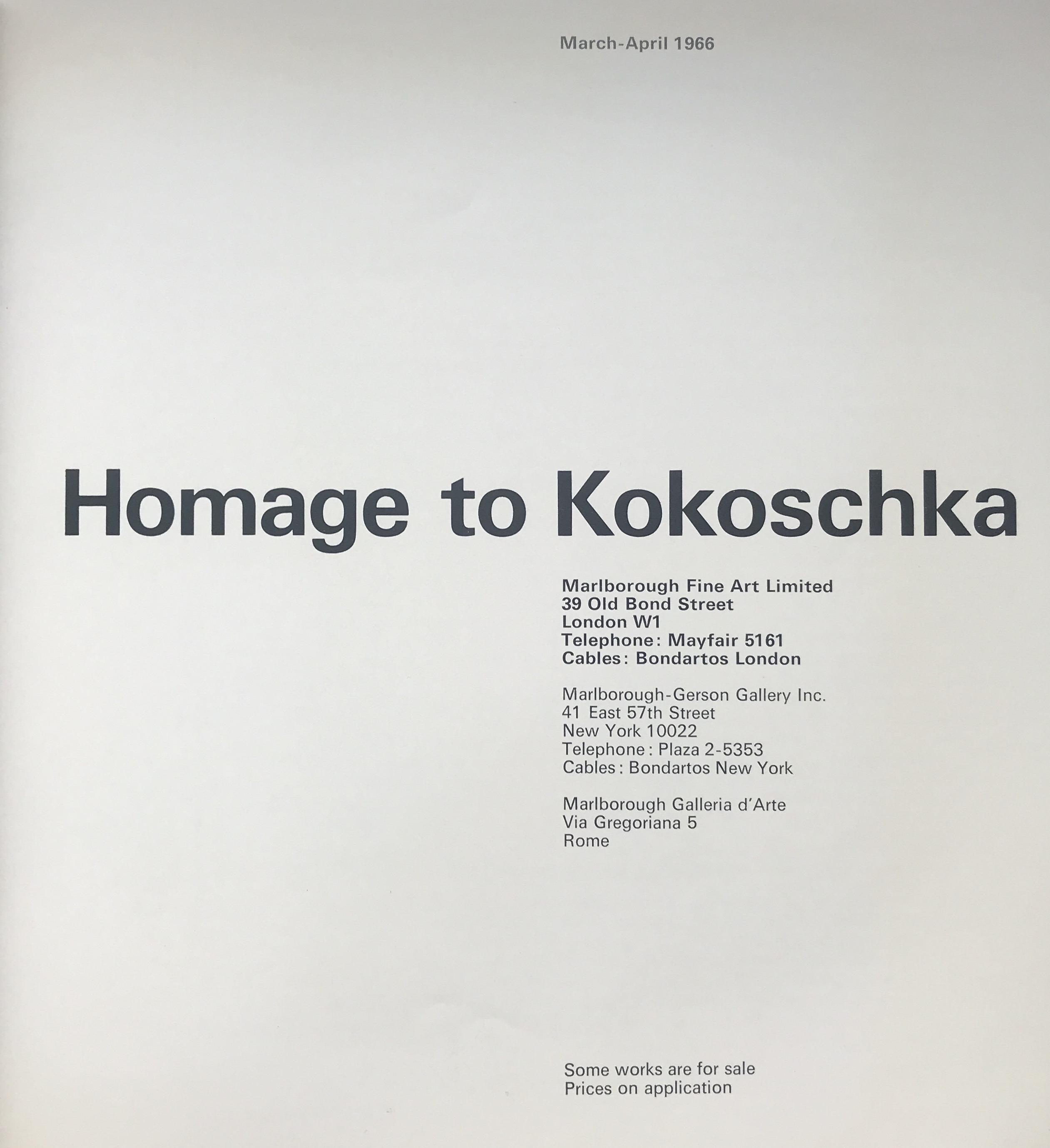
Homage to Kokoschka, exhibition catalogue, Marlborough Fine Art, 39 Old Bond Street, London, March-April 1966, title page (METROMOD Archive). The catalogue indicates the international presence of the gallery. 
Homage to Kokoschka, exhibition catalogue, Marlborough Fine Art, 39 Old Bond Street, London, March-April 1966, p. 46: list of past exhibitions (METROMOD Archive). 
Report on the art market in England with an entry on Marlborough Fine Art (left column) in the Swiss magazine Du, no. 10, 1959, p. 53 (Photo: Private Archive). The entry mentions the gallery owners and their pre-exile life in Vienna. 
Advertisement announcing the Francis Bacon. Recent Paintings exhibition at Marlborough Gallery in 1960, The Manchester Guardian, 2 April 1960, p. 3 (Photo: Private Archive). Bacon had left Hanover Gallery for Marlborough Gallery at the end of the 1950s. Anonymous. “Wer ist wer im Kunsthandel. England.” Du, vol. 19, no. 10, 1959, p. 53.
Aronowitz, Richard, and Shauna Isaac. “Émigré Art Dealers and Collectors.” Insiders Outsiders. Refugees from Nazi Europe and their Contribution to British Visual Culture, edited by Monica Bohm-Duchen, Lund Humphries, 2019, pp. 129–135.
Art in Revolt. Germany 1905–25. Exhibition in Aid of World Refugee Year, exh. cat. Marlborough Fine Art, London, 1959.
Browse, Lillian, editor. Constantin Guys. Faber & Faber, 1946.
Carritt, David. “The Dizzy Success Story of the other House of Marlborough.” Evening Standard, 6 September 1961. Marlborough Gallery London, https://www.marlboroughgallerylondon.com/history. Accessed 14 April 2021.
McEwan, Dorothea. “The Fischer Family Archive in London: A Description of the Holdings.” German History, no. 5, Autumn 1987, pp. 74-81.
O’Doherty, Brian. “Art: Marlborough Opens Branch Here.” The New York Times, 2 October 1963. Marlborough Gallery London, https://www.marlboroughgallerylondon.com/history. Accessed 14 April 2021.
Shirey, David L. “Frank Lloyd and the Marlborough: Art and Success.” The New York Times, 21 May 1973, https://www.nytimes.com/1973/05/21/archives/frank-lloyd-and-the-marlborough-art-and-success-sales-of-30million.html. Accessed 14 April 2021.
Smith, Roberta. “Frank Lloyd, Prominent Art Dealer Convicted in the 70’s Rothko Scandal, Dies at 86.” The New York Times, 8 April 1998, https://www.nytimes.com/1998/04/08/arts/frank-lloyd-prominent-art-dealer-convicted-in-the-70-s-rothko-scandal-dies-at-86.html. Accessed 14 April 2021.
Summers, Cherith. “Marlborough Fine Art.” Brave New Visions. The Émigrés who transformed the British Art World, exh. cat. Sotheby’s, St. George’s Gallery, London, 2019, p. 20. issuu, https://issuu.com/bravenewvisions/docs/brave_new_visions. Accessed 18 April 2021.
Tanfield, Paul. “The Fine Art of Making Money.” Daily Mail, 4 October 1960. Marlborough Gallery London, https://www.marlboroughgallerylondon.com/history. Accessed 14 April 2021.
Williamson, Marcus. “David Somerset, society grandee.” The Independent, 22 August 2017, https://www.independent.co.uk/news/obituaries/david-somerset-society-grandee-a7900761.html. Accessed 14 April 2021.
Word Count: 268
- 1946
Harry Fischer, Frank Lloyd, David Somerset.
- London
- Burcu Dogramaci. "Marlborough Fine Art." METROMOD Archive, 2021, https://archive.metromod.net/viewer.p/69/1470/object/5145-11259521, last modified: 15-04-2023.
-
Kurt SchwittersArtistPoetLondon
The artist and poet Kurt Schwitters lived in London between 1941 and 1945, where he stood in contact to émigré and local artists, before moving to the Lake District.
Word Count: 27
Herbert ReadArt HistorianArt CriticPoetLondonThe British art historian Herbert Read established himself as a central figure in the London artistic scene in the 1930s and was one of the outstanding supporters of exiled artists.
Word Count: 30
20th Century German ArtExhibitionLondonThe 20th Century German Art exhibition of 1938 gave visibility to artists who had been defamed at the Munich exhibition Entartete Kunst and were persecuted by the National Socialist regime.
Word Count: 29
Roland, Browse & DelbancoGalleryArt DealerLondonÉmigré art historians and art dealers, Henry Roland and Gustav Delbanco, along with Lillian Browse, opened their Mayfair gallery, Roland, Browse & Delbanco, in 1945.
Word Count: 24
Hanover GalleryArt GalleryLondonThe Hanover Gallery was founded by Erica Brausen and dedicated to interwar modernism and contemporary art, supporting the early careers of Francis Bacon, Lucian Freud and Niki de Saint Phalle.
Word Count: 30
Modern Art GalleryArt GalleryLondonThe Modern Art Gallery, founded by the émigré painter, sculptor and writer Jack Bilbo, was a forum for the presentation of modern art, specialising in the work of emigrant artists.
Word Count: 30
St. George’s GalleryArt GalleryLondonIn 1943, the art dealer Lea Bondi Jaray, with support of Otto Brill, also exiled from Vienna, took over St. George’s Gallery in Mayfair, exhibiting contemporary British and continental art.
Word Count: 30
Rosa SchapireArt HistorianLondonThe art historian Rosa Schapire, a supporter of Expressionist art, contributed to the presence of Expressionist art in England with loans and donations from her art collections rescued to London.
Word Count: 30
Faber & FaberPublishing HouseLondonFaber & Faber shows the importance of publishing houses as supporters of contemporary art movements and of the contribution of emigrants, helping to popularise their art and artistic theories.
Word Count: 29